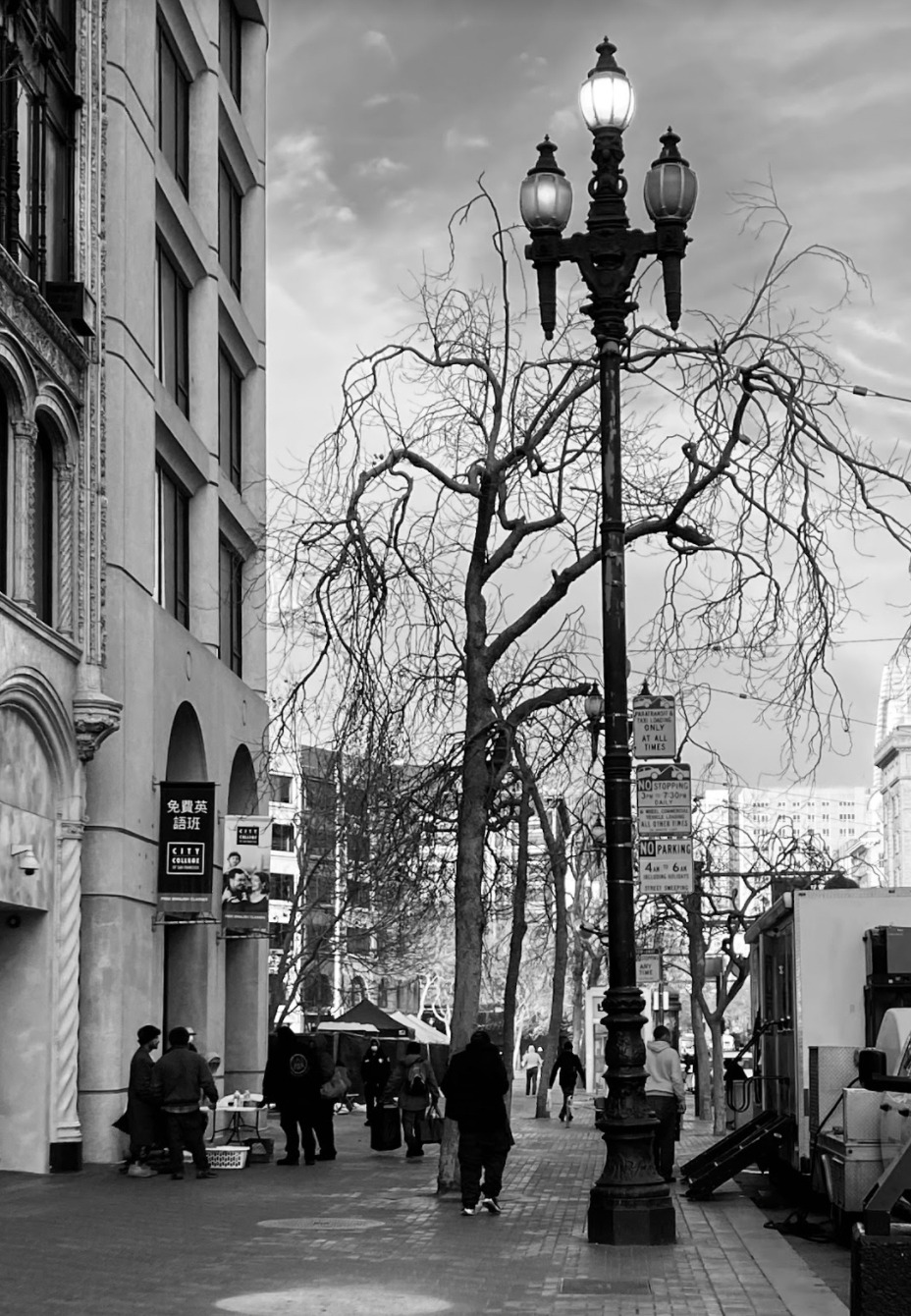On December 17, 2021, Mayor London Breed declared a state of emergency regarding drug overdoses and public health in the Tenderloin. The Tenderloin is a San Francisco neighborhood stretching 50 square blocks through the downtown marketplace.
The declaration was officially approved just after midnight on December 24. Eight supervisors voted yes and two no. One supervisor was absent.
Breed began to implement her 90-day order allowing the city to create new infrastructure for mental health services. This made it possible for the city to quickly open the Linkage Center and fill 450 vacant positions in the Community Behavioral Health Department. By January 20, the first 90 positions had been filled.
Breed’s plan also allocates more money for police overtime. However, community backlash has prevented Breed from furthering this goal.
Those opposed to Breed’s declaration were Supervisors Shamann Walton and Dean Preston. Before the final vote on the declaration, a representative from the mayor’s office stated that Breed would not initiate a sweep of arrests without the board’s approval.
District 8 Supervisor Rafael Mandelman ’92 voted in favor of the declaration.
Mandelman said, “It was interesting to me that so many of my colleagues — even colleagues that support the emergency declaration — seem to believe that we should not have any increased police presence in the Tenderloin, which I think is insane.”
However, Mandelman agrees the problem cannot be solved solely through increased police presence. “I don’t think we can keep allowing folks to be arrested, go back, sell more drugs, be arrested, go back, sell more drugs and be arrested. We are doing a terrible job right now of stopping that,” said Mandelman.
For decades, mayors have tried and failed to permanently solve the homelessness crisis. Previous attempts include overcrowding hotels and shelters, mandating law enforcement to forcefully relocate the unhoused, and reigniting the notorious War on Drugs.
Data shows the Tenderloin is in a dire state. In 2020, drug overdoses in the city surpassed the number of COVID-19 deaths by 300%. One-fourth of those occurred in the Tenderloin. In 2021, the Tenderloin accounted for only 7% of the city’s population but over 40% of overdoses. Over the last three years, there have been over 1700 overdoses, and the number of drug fatalities surpasses two people per day.
Simultaneously, crime rates in the neighborhood have risen to an unmanageable state. In December of 2021, police seized over 5.2 kilos of drugs. They conducted 83 felony arrests and 47 drug arrests. Since 2017, almost 17,000 crimes have been reported in the neighborhood.
Breed’s decision to bring more police to the streets and use them to clean up the Tenderloin has reignited San Francisco’s controversy over how to deal with homelessness.
“I believe and feel that, unfortunately, the police are not the best when it comes to being able to connect people with the resources they actually need; more people than necessary end up stuck in the criminal justice system,” said Alan Wesson Suárez, an activist and Public Purpose Program Director at Lick-Wilmerding. “I think in our minds — or at least the government’s minds — safety is policing, but that’s not always the case. For a lot of black, brown and lower-income inhabitants of the city, adding more police does not feel safer because often they feel more targeted, and are more targeted.”
“For me, it (increased police presence) makes me feel less safe. As a woman of color, I’m always concerned about ‘are the cops going to think I’m out here selling drugs by the way that I’m dressed, or just my demeanor in general,” said Tracey Mixon, a Tenderloin resident and peer organizer for the Coalition on Homelessness in San Francisco. “I don’t want people to get accused of loitering as a reason for the cops to mess with them, because they do that anyway if you’re a person of color.” Mixon has been fighting the city’s laws and practices against homelessness for almost four years, and has been working directly in the neighborhood for fifteen.
“By arresting all of these people, there’s just going to be somebody else out here selling drugs. They’re really not stopping the problem,” said Mixon.
Breed had announced her plan to increase police presence three days before officially announcing her declaration of emergency. Her words were met with outrage from the crowd.
“People who are assaulting and spitting on and stabbing and shooting and destroying this community, we are gonna make life hell for them,” said Breed. “It is time that the reign of criminals who are destroying our city, it is time for it to come to an end, and it comes to an end when we take the steps to be more aggressive with law enforcement, more aggressive with the changes in our policies, and less tolerant of all the bullshit that has destroyed our city.”
Mixon was present when she spoke. “She made me feel really, really bad about this neighborhood. It was kind of disheartening because she made it seem like the Tenderloin was the scum of the Earth, and it’s almost like she wants it to be wiped out.”
Nikita Saini, a legislative aid for Supervisor Hillary Ronen, also saw the speech. “Originally how it [Breed’s proposal] was presented was awful, to be honest with you. That’s not what we believe in, we don’t think that’s right at all,” said Saini. Previously a public defender for five years, Saini now works with Ronen on criminal justice issues, mental and behavioral health, public safety, public health and the emergency order.
The question is not whether the neighborhood needs help, but how to approach the problem.
One response is to decriminalize drugs, decreasing the stigma surrounding addiction and allowing San Francisco to address the underlying social issues that drive people to begin using.
“We look at mental health and substance abuse as a public health issue. It’s not something that should be criminalized. Locking somebody in a cage for having a mental health crisis or an addiction isn’t okay at all, and it doesn’t fix the problem,” said Saini.
A major aspect of Breed’s plan is the Tenderloin Linkage Center, which is located at 1172 Market Street and officially opened on January 18, 2022. Currently operating 7 days a week from 8 a.m. to 8 p.m., the center’s goal is to eventually become a 24/7 resource for people experiencing homelessness or substance abuse. At its full capacity, the center will offer Narcan — opioid overdose treatment — support and information, a food pantry, resting cots, areas for pets and more. During the 90-day emergency order, the center will be operating on only two floors, but with a six month lease, they plan to open all eight as soon as possible. This will be possible with more staff, who undergo mandatory training on recognizing signs of overdose, administering Narcan and the protocol for calling 911.
“I’m very hopeful and optimistic that we’re moving in the right direction towards real change,” said Saini. “We have a lot of resources. It’s just so disjointed and nobody’s really collaborating with each other, they’re not listening to case managers and some of the placements are off. I think if we have this cohesive, comprehensive, low barrier, universal access care system, it will make a huge difference in San Francisco.”
After visiting the Tenderloin Linkage Center on January 20, Mixon noticed that it lacks outreach and case management services.
“Honestly, I feel like it’s just going to be temporary. For me, it’s all smoke and mirrors to make it seem like they’re doing something,” said Mixon, in reference to Breed’s attempts to solve the Tenderloin’s problems.
On the Linkage Center’s first day of operation, they reported 118 visitors, inspiring the city government to fulfill their goal of acquiring more buildings for support. On the corner of Geary and Hyde, a former Goodwill has been recently selected to become a crisis diversion unit, projected to open in 2023. More facilities like this are set to be developed into safe consumption and injection sites, as well as testing areas for laced drugs.
However, the question arises in which neighborhoods these additional facilities will be placed and in which they will be denied.
In the second week of January, three weeks into Breed’s declaration, 340 emergency calls were made to the Tenderloin, resulting in 59 Narcan administrations and five deaths. Additionally, SF Homeless Outreach Teams referred 219 people to shelters and other services, as well as provided over 200 wellness resources including water, face masks and hygiene kits.
Although Breed’s controversial threat to sweep the streets with law enforcement does not seem to be in motion, many problems still remain prevalent in the neighborhood.
10% of San Francisco lives below the poverty line — $12,140 for an individual and $25,100 for a family of four.
“It’s not always their (people experiencing homelessness’s) choice. Oftentimes people are pushed out of jobs, people are forced into homelessness, and we’re not really addressing that core issue,” said Christine Godinez Jackson, the director of the Center for Civic Engagement at LWHS. “What we have to do is make sure we don’t fall into making assumptions about people and why they’re in the situation that they’re in. We don’t know.”
San Francisco continues to dive deeper into an economically unequal reality, leaving us wondering: how can the reality of poverty and homelessness be solved.
“Actually establishing a continuous, comprehensive system of care in terms of behavioral health and substance abuse in San Francisco is going to make a huge difference,” said Saini. “You have to give people homes, but you also have to give them services.”
“It’s such a huge problem. It would take a restructuring of society to change it,” said Godinez Jackson.







